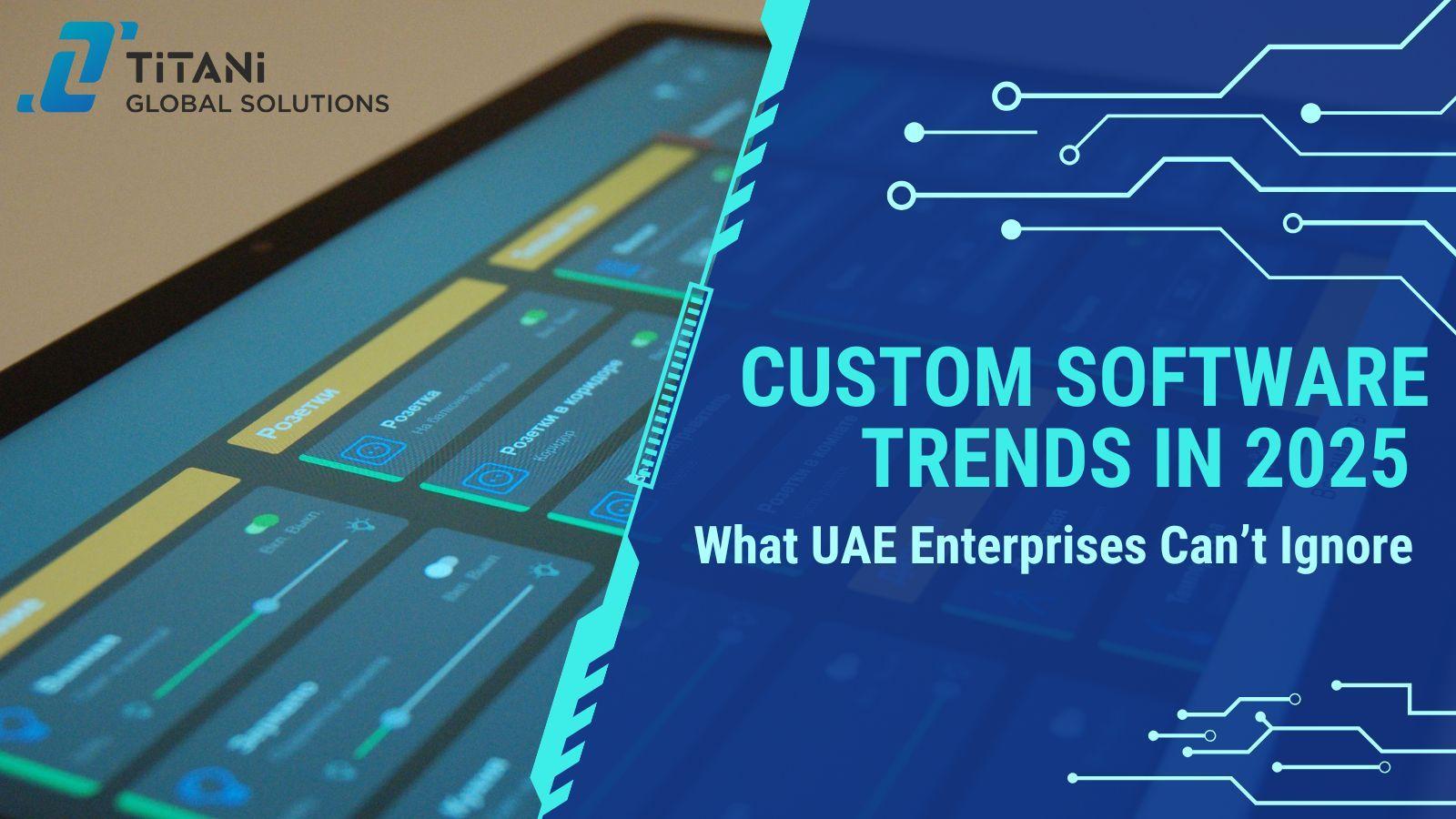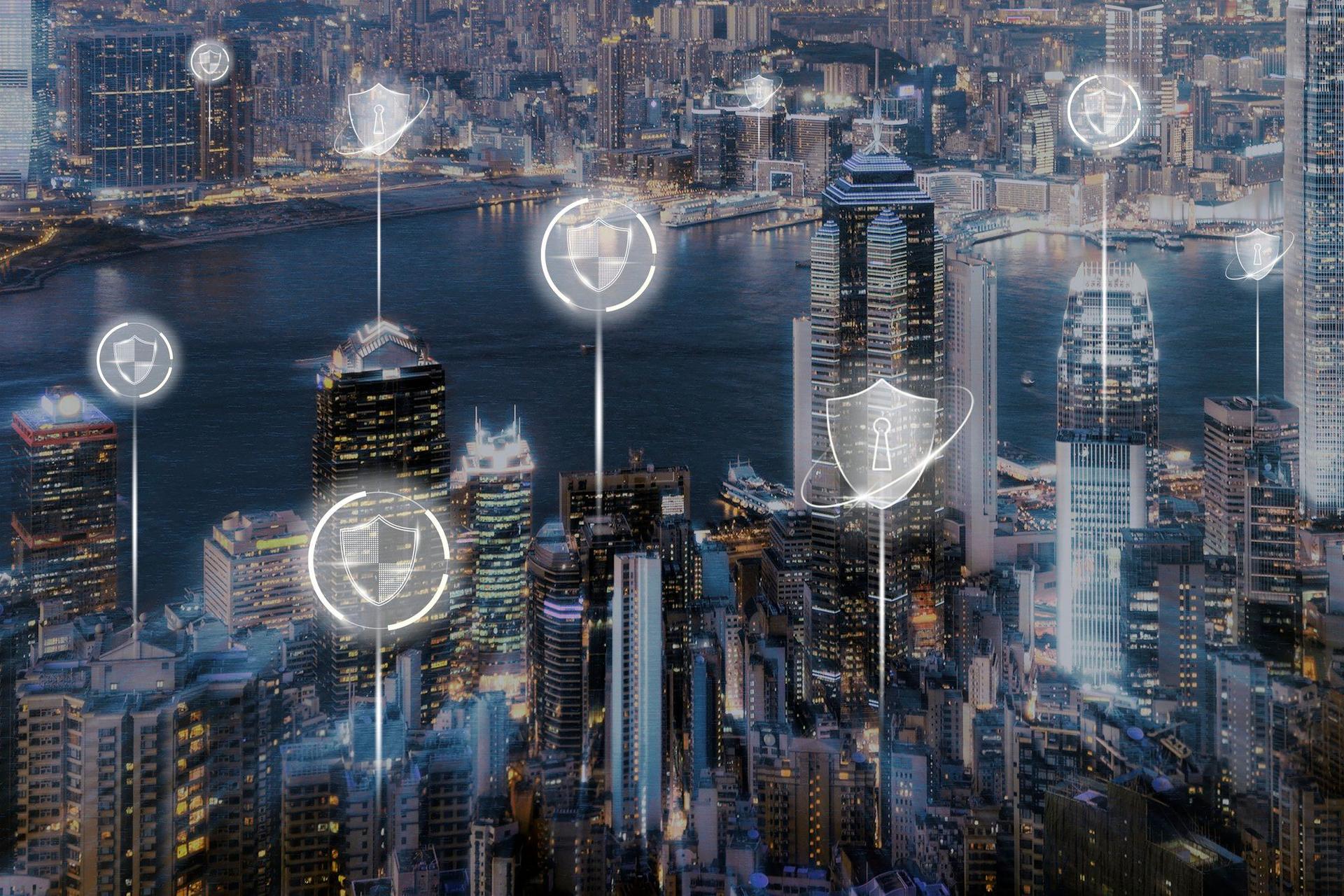Summary for Decision-Makers
2025 is not about chasing “what’s new” in tech — it’s about spotting which innovations truly shift business outcomes. For SME leaders, these 10 trends go beyond buzzwords: they’re practical levers to cut costs, speed up delivery, and unlock new growth.
From Generative AI moving into daily operations and 5G powering real-time customer experiences, to quantum computing, blockchain, IoT, AR/VR, edge computing, biotech, and autonomous vehicles, each trend carries direct implications for competitiveness, efficiency, and customer trust.
The key takeaway: you don’t need to adopt all 10. You need to identify which align with your strategy — and act before your competitors do.

Introduction: Why Tech Trends Matter More for SMEs in 2025
In 2025, the technology landscape is no longer just about "what's new,” it’s about "what moves the needle" for business. For founders of small and medium-sized enterprises (SMEs), tech isn’t just an enabler. It’s a strategic weapon.
Whether you're looking to scale, improve margins, or stay relevant, knowing which technological trends to watch (and act on) can define your next growth curve. At Titani, we work with SME leaders to connect these trends with real solutions — and in this report, we break down the top 10 innovations shaping business today.
Let’s start with the one leading every conversation:
1. Generative AI Goes Enterprise
2023 was the year generative AI exploded. 2025 is the year it goes mainstream — not just for creators and marketers, but for business operations, customer service, and even software development.
At its core, Generative AI refers to algorithms (like GPT, DALL·E, Midjourney, and more) that can create original content — text, images, audio, or code — with remarkable fluency. But the shift happening now is this:
→ Companies aren’t just using GenAI tools — they’re integrating GenAI into their products, workflows, and customer journeys.
Why it matters to SMEs:
Faster time-to-market for content, campaigns, and software prototypes
Reduced the cost of ideation and repetitive tasks
Personalized customer experiences on a scale
According to a joint report by Microsoft and LinkedIn (2024 Work Trend Index),
“71% of business leaders say they would rather hire a less experienced candidate with GenAI skills than a more experienced one without them.”
Real Use Cases We’ve Seen:
Proposal Generator: SMEs use GenAI to auto-generate draft proposals and customize them per client vertically.
Internal AI Assistants: Knowledge bots trained on company SOPs reduce internal support workload.
AI QA Testing Support: Combined with traditional QA, GenAI helps simulate edge-case scenarios faster.
What to Watch:
As GenAI matures, expect agentic AI — autonomous AI agents — to become part of your operations. These agents won’t just generate content; they’ll make decisions, trigger actions, and optimize workflows in real-time.
💡 Want to explore how GenAI could reduce operating costs or improve delivery for your company? Let’s talk: https://titanisolutions.com
2. Quantum Computing: Unlocking the Next Tier of Problem-Solving
Quantum computing has long been considered “bleeding edge” — too abstract, too experimental. But in 2025, its early business applications are starting to materialize, particularly in sectors that demand high-performance computing: pharmaceuticals, finance, logistics, and cybersecurity.
Unlike classical computers, which process data in binary (0s and 1s), quantum computers use qubits — allowing them to perform multiple calculations simultaneously. This unlocks the potential to solve problems millions of times faster than conventional systems.
Why it matters to SMEs (yes, even now):
You don’t need to own a quantum computer to benefit.
Cloud providers like IBM, Google, and Amazon are offering Quantum-as-a-Service (QaaS) models.Complex optimization problems — from supply chain routing to portfolio risk analysis — are becoming more solvable.
Quantum security is a rising concern. Understanding post-quantum encryption is important if your business handles sensitive or regulated data.
Example Applications:
Drug Discovery: Simulating molecular interactions for faster R&D.
Logistics Optimization: Minimizing cost/distance/time in dynamic networks.
Finance Modeling: Quantum algorithms for risk, fraud detection, and market forecasting.
📎 Want to dive deeper? Read IBM’s primer on Quantum Computing for Business
What to Watch:
In the next 3–5 years, quantum computing will move from labs to APIs. As open-source quantum toolkits grow (like Qiskit or Cirq), even SME dev teams will start experimenting with quantum workflows — often embedded in cloud platforms.
💡 Thinking ahead: SMEs in regulated industries (finance, healthcare) should begin evaluating quantum-safe encryption standards starting this year.
3. 5G & Beyond: Real-Time, Everywhere
The global rollout of 5G networks has been gradual, but 2025 marks the inflection point: 5G is no longer a future promise — it’s the new standard. For SMEs, this opens the door to a wide range of low-latency, high-bandwidth applications that simply weren’t feasible with 4G.
What Makes 5G So Transformative?
Speed: Up to 20 Gbps download speeds — nearly 10x faster than 4G
Latency: Less than 1 millisecond, enabling real-time responsiveness
Device density: Support for 1 million devices per square kilometer, perfect for IoT-heavy environments.
Why it matters to SMEs:
Real-time services: Enable instant transactions, remote operations, and live customer engagement.
IoT integration: From smart factories to remote monitoring systems, 5G makes massive sensor networks viable.
Edge computing: Combine with 5G to process data locally at the device level — reducing cloud dependency.
Use Cases Emerging in 2025:
Smart Warehousing: 5G-powered robotics systems for real-time inventory tracking and restocking.
Telehealth: Medical SMEs are offering real-time diagnostics and consultations via mobile with ultra-low latency.
Augmented Reality Sales Tools: Field teams use AR product demos with no lag.
What to Watch:
5G is also laying the groundwork for 6G, which is expected to bring AI-native networks and even holographic communications. While 6G is likely a 2030 reality, SMEs investing in 5G-compatible infrastructure today will be better positioned for tomorrow’s upgrades.
💡 Pro Tip: If you’re building customer-facing apps, test them on 5G to unlock richer experiences — think instant video, AR overlays, or ultra-fast onboarding.
4. Virtual Reality 2.0: Immersive Experiences Go Corporate
Virtual Reality (VR) has come a long way from gaming headsets and novelty demos. In 2025, we’re seeing the rise of VR 2.0 — more lightweight, battery-efficient, and business-focused.
It’s now a serious tool for training, onboarding, product walkthroughs, and remote collaboration. Especially for SMEs in manufacturing, education, healthcare, and professional services, VR brings a new level of presence and engagement.
What’s new in VR 2.0:
Higher resolution optics and lower motion lag
Standalone headsets (like Meta Quest 3) that no longer require PCs
Support for multi-user, real-time interaction
Enterprise-ready software platforms with analytics & tracking
Why it matters to SMEs:
Reduce training costs: Simulate machinery operation, safety drills, or onboarding processes without physical risks.
Enhance sales experience: Let customers "walk through" virtual buildings, prototypes, or environments.
Remote collaboration: Create virtual meeting rooms that improve engagement over standard video calls.
Example Scenarios:
A construction SME uses VR to present design mockups to clients across the UAE and Europe.
A healthcare training center onboards new staff with hands-on practice in a fully simulated ER.
A legal tech firm walks clients through virtual re-creations of case scenes for courtroom prep.
📎 Meta for Work’s 2025 guide to VR in Business
What to Watch:
With Apple, Meta, and HTC investing heavily in enterprise VR, expect more industry-specific tools and API integrations to emerge — from CRMs to ERPs.
💡 Founders note: VR can create differentiation not just in delivery — but also in brand experience. Think of onboarding portals, immersive service demos, or even investor pitches.
5. Augmented Reality (AR): Bridging Physical and Digital in Real Time
While VR creates entirely virtual environments, Augmented Reality (AR) overlays digital content onto the real world — and in 2025, it’s becoming far more accessible, mobile-friendly, and commercially viable for SMEs.
From real-time product visualization to field service enhancements, AR is helping businesses deliver smarter, faster, more interactive experiences — especially in retail, real estate, manufacturing, and B2B sales.
What’s driving AR adoption in 2025:
Mobile-first AR SDKs (like Apple’s ARKit and Google’s ARCore)
Smarter devices: More smartphones, tablets, and smart glasses now support AR natively
5G connectivity: Eliminates lag, enabling smoother real-time rendering
Why it matters to SMEs:
Reduce purchase hesitation: Let customers visualize products in their space (think: furniture, machinery, construction outcomes).
Boost service efficiency: Field teams use AR to access step-by-step repair guides or remote expert support.
Create engaging sales pitches: Use 3D models or layered data in live product demos — no need for physical samples.
Example Applications:
A real estate SME lets buyers "walk through" a property remotely via mobile AR.
A machinery distributor offers an AR app to show equipment setup in the client’s factory layout.
A cosmetics brand enables customers to test products virtually via their phone.
📎 Explore Google ARCore and Apple’s ARKit for implementation tools.
What to Watch:
Expect a surge in AR-powered smart glasses tailored for enterprise use. With players like Apple Vision Pro and Meta’s Ray-Ban Stories evolving, fieldwork, logistics, and frontline roles will see major productivity gains.
💡 Tip for Founders: If your sales process relies on trusting what can’t be seen yet (e.g. software, architecture, infrastructure), AR can bridge that gap better than static PDFs or slide decks.
6. Internet of Things (IoT): Smarter Devices, Smarter Decisions
The Internet of Things (IoT) — where everyday objects are connected to the internet and each other — is no longer a futuristic concept. In 2025, it's a foundational layer for smart business operations, predictive analytics, and real-time decision-making.
According to projections, the number of active IoT devices is expected to reach 30 billion globally by 2025 — nearly double the count from 2023.
Why it matters to SMEs:
Better visibility: Monitor equipment usage, asset location, energy consumption, and customer behavior in real-time.
Predictive maintenance: Reduce downtime by spotting issues before they escalate.
Cost optimization: Automate tasks like inventory restocking, HVAC control, or lighting, saving both time and resources.
Example Use Cases:
A logistics firm in Dubai tracks shipments across borders in real time using GPS-enabled IoT tags.
A food manufacturer uses sensors to monitor storage temperatures and avoid spoilage.
A retail SME connects shelves and POS systems to sync stock levels, promotions, and customer footfall analytics.
What to Watch:
As IoT and AI converge, expect smarter systems that not only collect data but also interpret and act on it autonomously — what we now call AIoT (Artificial Intelligence of Things).
Edge computing is also critical: instead of sending all data to the cloud, devices can process info locally for faster, offline-ready insights — ideal for remote sites or real-time systems.
💡 Founder insight: If your business involves physical assets (vehicles, facilities, inventory), IoT isn’t just a trend — it’s the starting point for operational intelligence.
7. Biotechnology in Agriculture: Growing Smarter, Not Just Bigger
Biotechnology is transforming agriculture far beyond genetically modified organisms (GMOs). In 2025, it’s about precision, resilience, and sustainability — solving real-world problems like food insecurity, climate volatility, and inefficient farming.
Through advances in genetic engineering, CRISPR gene editing, and molecular biology, agricultural SMEs can now optimize crops for drought resistance, higher nutritional value, and faster growth — all while reducing dependency on chemical inputs.
Why it matters to SMEs (especially in emerging markets):
Climate adaptation: Engineer crops to survive extreme heat, salinity, or water scarcity critically in regions like the Middle East, Africa, and South Asia.
Increased yields: Produce more with fewer resources — land, water, and labor.
Export advantage: Biotech-enhanced produce often meets stricter import standards for nutrition, shelf life, and traceability.
Example Applications:
An agritech startup in Vietnam uses gene-edited rice varieties that thrive in flood-prone areas.
A Gulf-region SME leverages CRISPR to grow tomatoes with longer shelf life, improving export potential.
Vertical farming companies in urban centers integrate biotech seeds for faster crop cycles and minimal pesticide use.
📎 Want to understand biotech’s business model potential? Read McKinsey’s Agriculture & Biotech report
What to Watch:
Biotech is merging with AI and IoT in smart farming — enabling automated precision agriculture. Startups are building platforms that track soil data, adjust watering schedules, and apply nutrients precisely based on genetic crop data.
💡 Founder insight: Even if you’re not in farming, expect biotech to influence food costs, supply chains, and sustainability certifications — especially if you operate in food, retail, or logistics sectors.
8. Autonomous Vehicles: Driving the Future of Logistics and Mobility
While fully self-driving cars are still navigating legal, ethical, and safety hurdles, autonomous vehicles (AVs) are making serious inroads in logistics, public transport, and controlled environments in 2025.
Enabled by AI, LIDAR, machine learning, and real-time edge computing, AVs are helping businesses move goods and people more safely, predictably, and efficiently.
Why it matters to SMEs:
Lower last-mile delivery costs: Autonomous delivery bots and vans can handle routine routes — especially in urban areas or gated communities.
Increased fleet efficiency: AV-assisted trucks can operate longer hours with fewer driver-related delays.
Safety and insurance: With AVs, businesses reduce accidents caused by human error, lowering premiums over time.
Example Applications:
A logistics SME in Abu Dhabi deploys semi-autonomous electric vans for warehouse-to-retail restocking.
A university shuttle system uses AVs for student transport across campus, cutting staffing and fuel costs.
A farm equipment company offers self-driving tractors for plowing and harvesting in large-scale operations.
📎 For more context, explore Waymo’s use cases and Tesla’s Autopilot data
What to Watch:
The real growth is in Level 2 and 3 autonomies — where vehicles handle steering and acceleration, but still require human oversight. These systems are already available in many commercial vehicles.
In the B2B space, automated forklifts, yard trucks, and delivery bots are becoming increasingly common — even in SMEs that don't consider themselves “tech companies.”
💡 Founder tip: Don’t wait for robotaxis — look into semi-autonomous solutions in warehousing, distribution, or field services that can deliver ROI today.
9. Blockchain Beyond Crypto: The Trust Layer for Modern Business
Blockchain isn’t just about Bitcoin anymore. In 2025, it’s evolving into a trust infrastructure for digital business — providing transparency, immutability, and decentralized control across industries like supply chain, healthcare, real estate, and government services.
For SMEs, blockchain offers an affordable way to compete on trust and traceability, without needing massive back-end infrastructure.
Why it matters to SMEs:
Tamper-proof records: From invoices to contracts, blockchain ensures documentation can’t be altered post-creation.
Smart contracts: Automate business processes (e.g., payments, deliveries, SLAs) that self-execute once conditions are met.
Supply chain transparency: Track every step of a product’s journey — from origin to destination — and prove it with blockchain logs.
📎 Explore IBM Blockchain or Ethereum’s use cases
Example Applications:
A coffee SME in Ethiopia uses blockchain to verify bean origin and sell at premium prices abroad.
A pharma distributor in Dubai ensures authenticity of medicine batches using smart QR + blockchain records.
A freight forwarder integrates blockchain to eliminate delays in bill-of-lading documentation.
What to Watch:
Governments and major corporations are increasingly requiring verifiable sourcing, ESG compliance, and traceability — blockchain can be your passport.
In finance, Decentralized Finance (DeFi) models may soon offer SMEs alternative access to credit, insurance, or liquidity — bypassing traditional banks.
💡 Founder tip: If you're dealing with cross-border trade, certifications, or high-value items, a lightweight blockchain layer can dramatically improve your credibility and operational resilience.
10. Edge Computing: Power at the Point of Action
As data volumes explode and real-time processing becomes critical, Edge Computing has emerged as a core enabler for modern applications — particularly in manufacturing, logistics, healthcare, and retail.
Rather than sending all data to a centralized cloud, edge computing processes information locally — at the “edge” of the network, near the data source. This reduces latency, improves reliability, and supports offline functionality.
Why it matters to SMEs:
- Speed: Make faster decisions — critical for automation, robotics, or customer-facing applications.
- Cost efficiency: Minimize bandwidth costs by reducing cloud data transfer needs.
- Resilience: Systems can function even if cloud connectivity drops — essential for field sites or remote operations.
📎 Learn more from Intel’s Edge Computing Overview
Example Applications:
- A logistics SME uses edge servers in delivery vans to process route optimization in real time — without relying on constant internet.
- A retail chain processes in-store customer behavior data locally to trigger instant promotions or adjust shelf displays.
- A smart factory uses edge sensors to monitor machine health and prevent downtime through predictive maintenance.
What to Watch:
Edge computing becomes even more powerful when combined with AI and IoT — forming what’s now called Edge AI. Imagine smart cameras that not only detect activity but also interpret it on the spot (e.g., suspicious behavior, inventory errors).
💡 Founder tip: If your operations rely on physical infrastructure, mobility, or real-time responsiveness, edge computing could reduce cloud costs while improving reliability — a rare win-win.
Conclusion: From Awareness to Action
Technology is no longer the future. It’s the competitive edge of the present.
As we’ve seen across these 10 emerging trends — from generative AI and edge computing to blockchain and biotech — the pace of innovation isn’t slowing down. But here’s the real insight: you don’t need to adopt everything. You just need to know which trends align with your business goals — and act early, before your competitors do.
For SME founders, the opportunity lies in focus and execution:
If you’re struggling with inefficiencies, AI and IoT could automate your bottlenecks.
If you’re exploring new revenue models, AR, blockchain, or XR could unlock better experiences.
And if you’re serious about scaling, edge computing and 5G might be the infrastructure edge you need.
At Titani Global Solutions, we don’t just track trends — we turn them into tailored, scalable, and secure solutions for growing businesses like yours. Whether you’re exploring a new product idea or rethinking your current systems, our team is here to help you move faster and smarter. Let’s discuss what’s next for your business



